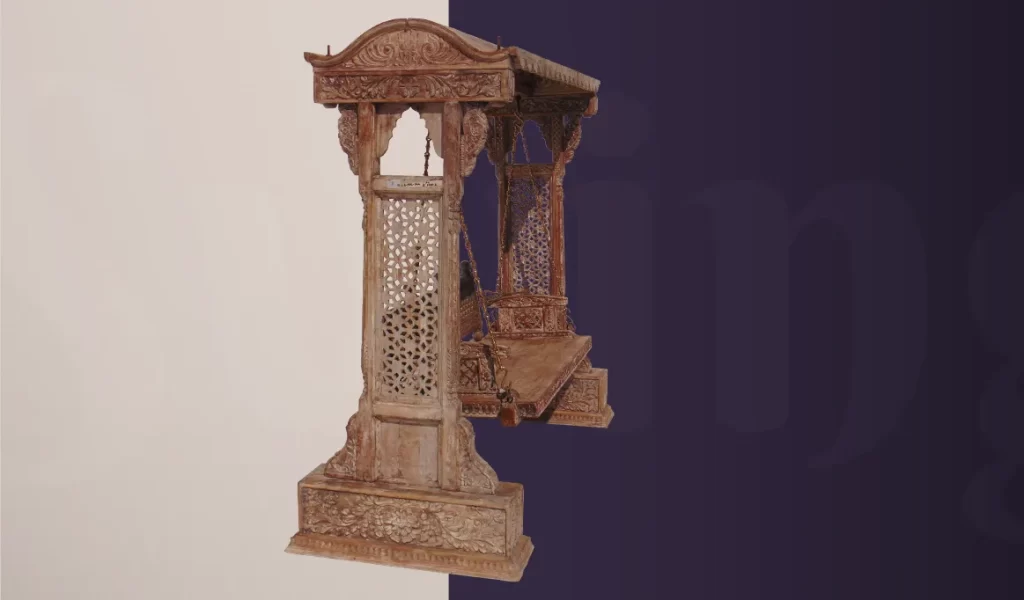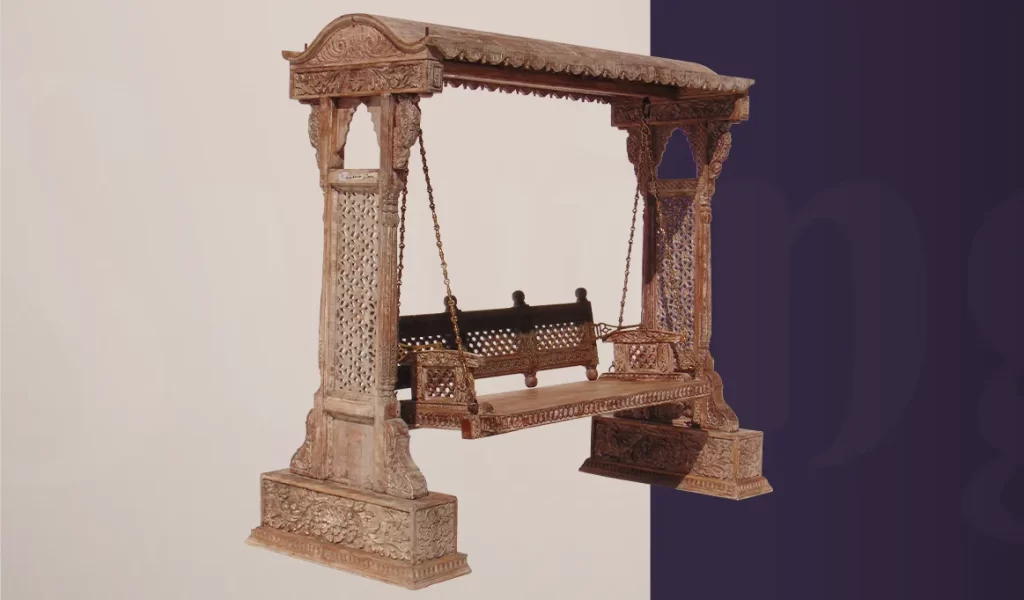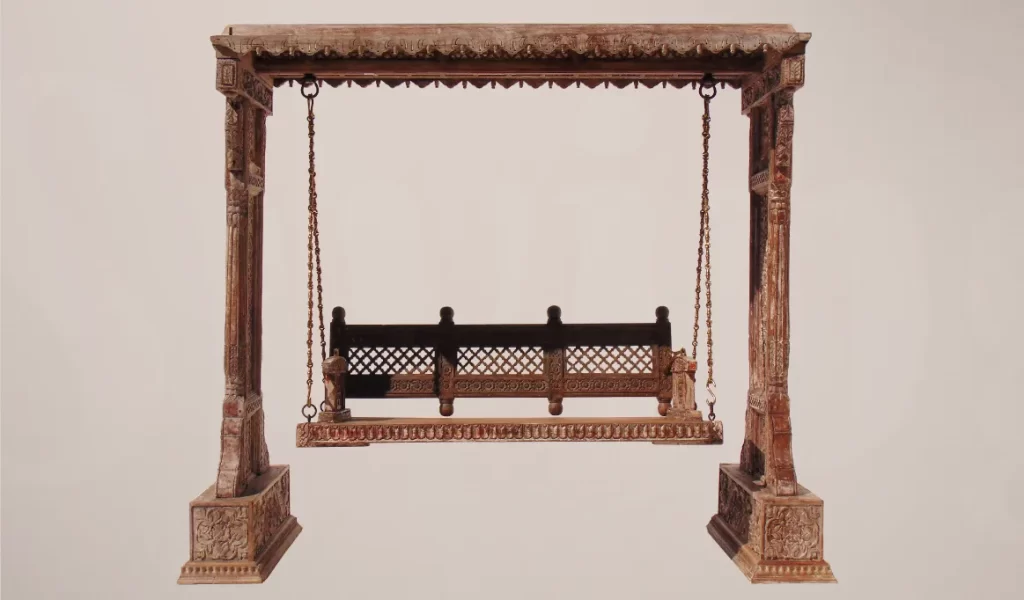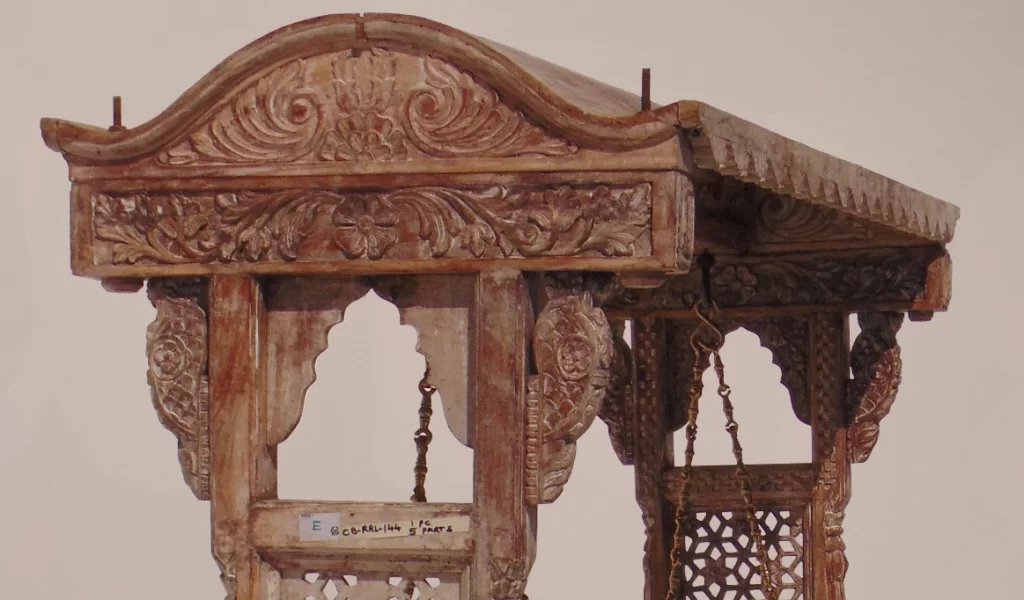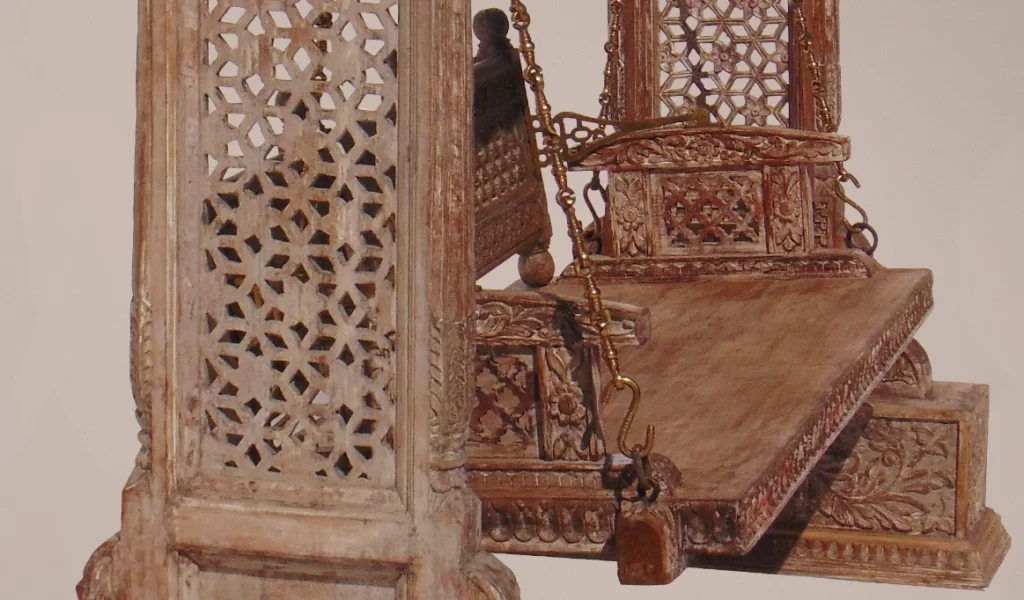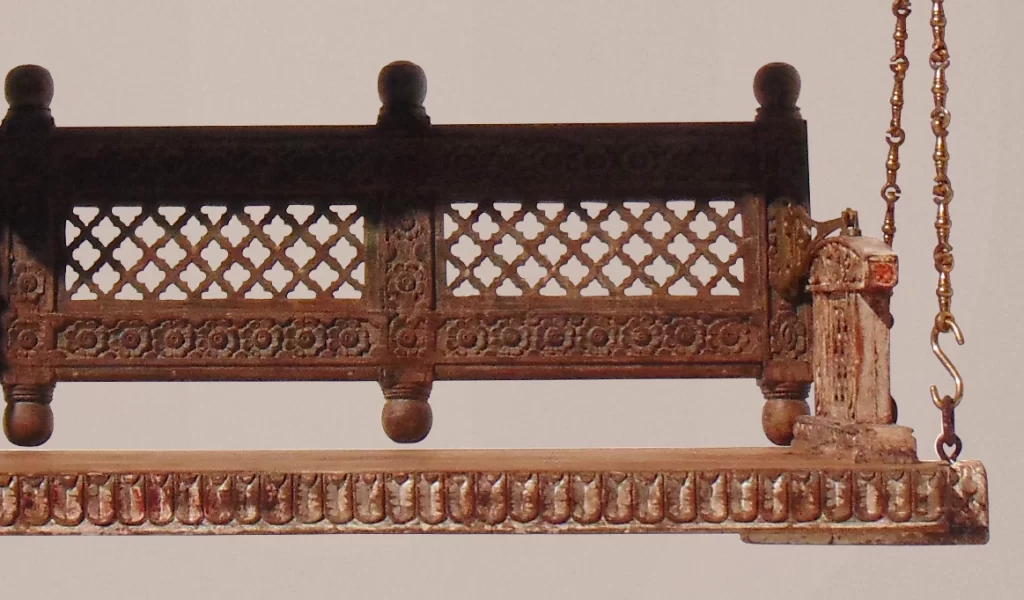
Exquisit Mughal design garden swing
This extraordinary garden swing would serve as a place for reading, relaxation and contemplation.
The backrest on the bench of the swing can be turned in order to choose if one would like to have a garden view or a palace view without having to move the swing, a refined and practical detail made to better the experience of using this magnificent swing.
The charged floral design carved into this piece is intended for it to blend in harmony with the garden landscape design.
The monumental palaces, tombs, and mosques of the Mughals need no
introduction. These buildings came with grandeur, magnificence, lavishness, and a dominating visual character. But it is the gardens the Mughals built, that demand a special place amidst their splendid buildings, as these
gardens transformed the landscapes of various cities like Delhi, Agra,
Kashmir, and Lahore.
Mughal garden designs are heavily influenced by the medieval Islamic
gardens and are often seen as a place of rest and reflection. These gardens are considered to be a reminder of paradise. The concept of a planned garden, also known as the “Charbagh” was introduced in South Asia by the Mughal Emperor Babur. The first garden was established by him in
Afghanistan. He lamented the fact that Al-Hind lacked running water in
gardens or residences and the existing ones had no walls contradicting to Babur’s idea of enclosed gardens, in his memoirs.
Thus, he began constructing gardens and the assorted waterworks
necessary to remind him of his ancestral land, which was followed suit by his successors, changing the landscape of their empire. He brought the Persian wheel water supply system to create the gardens as the Indian plains were different from his homeland where the natural flow of water was used.
The main elements of Mughal gardens include running water and a pool to reflect the beauties of the sky and the garden, different varieties of trees to provide shade, to bear colorful and fragrant fruits or flowers; grass; birds to fill the gardens with song and the whole cooled by a pleasant breeze.
The Turkish / Mongolian elements of the gardens are usually the inclusion of tents, carpets, and canopies reflecting the
nomadic roots. Mughal Gardens served various functions which include their use as airy quadrangles within their palatial
complexes, pleasurable retreats, and also as a base for hunting expeditions.
The gardens were also used as official
halting spaces, some Mughal gardens had a special seating place surrounded by fountains which created an effect in which the conversation held in that particular spot couldn’t be heard outside of it, Mughal rulers used this spot to discuss important state strategies in complete secrecy.
Additional information
| Region | Northern India |
|---|---|
| Century | XIX-XX Century |
You may also like ..
Related products
-

Decorative polychromed Wood doorstop
$325.00 -
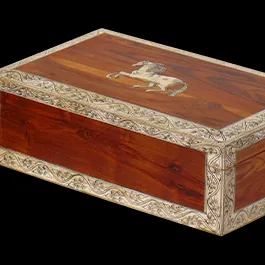
Mughal design Teak Boxes
$420.00 -
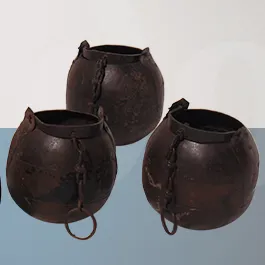
Iron well Buckets
$150.00 -
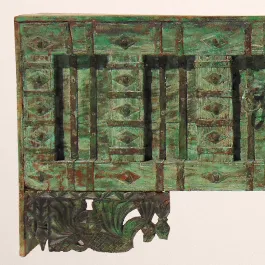
Dhamchiva indian painted wood dowry cabinet
$1,500.00 -

Beautiful Mughal Design Boxes
$550.00 -
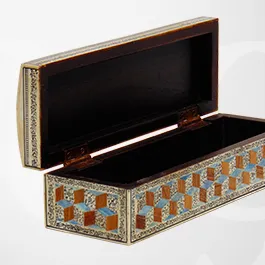
Beautifully painted and decorated bone box in Mughal design
$500.00 -

Indian painted and polychromed wood cabinet
$1,800.00 -
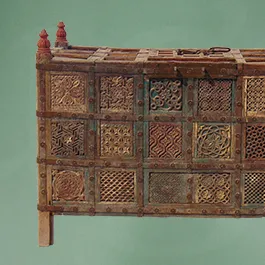
Rare and important teak dowry chest in Mughal design
$1,800.00
